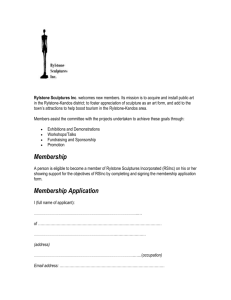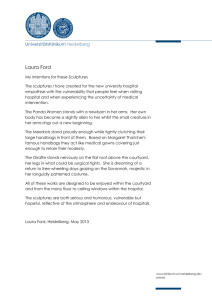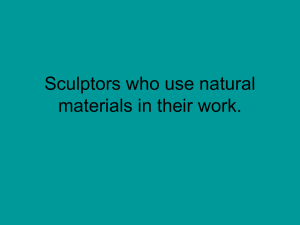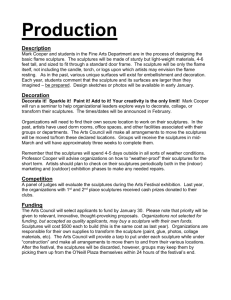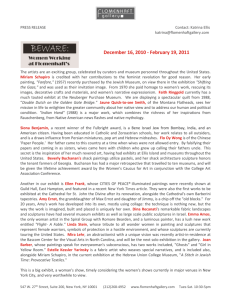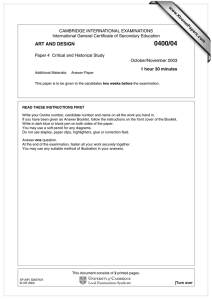After blowing out local foe Lasell in a
advertisement
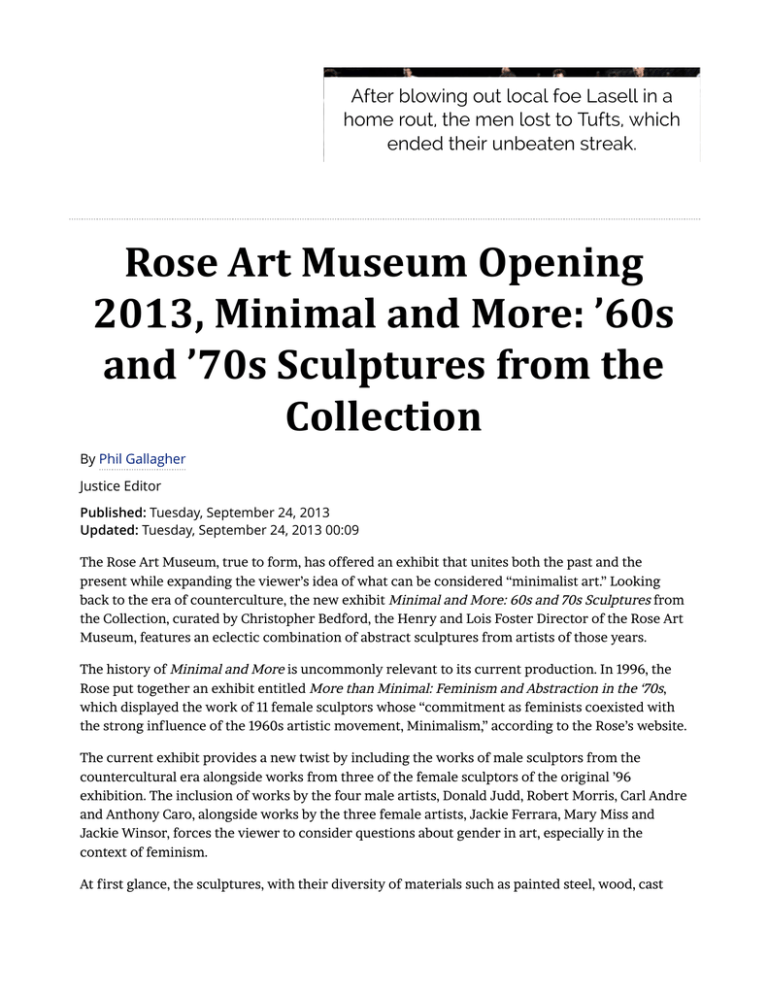
After blowing out local foe Lasell in a home rout, the men lost to Tufts, which ended their unbeaten streak. Rose Art Museum Opening 2013, Minimal and More: ’60s and ’70s Sculptures from the Collection By Phil Gallagher Justice Editor Published: Tuesday, September 24, 2013 Updated: Tuesday, September 24, 2013 00:09 The Rose Art Museum, true to form, has offered an exhibit that unites both the past and the present while expanding the viewer’s idea of what can be considered “minimalist art.” Looking back to the era of counterculture, the new exhibit Minimal and More: 60s and 70s Sculptures from the Collection, curated by Christopher Bedford, the Henry and Lois Foster Director of the Rose Art Museum, features an eclectic combination of abstract sculptures from artists of those years. The history of Minimal and More is uncommonly relevant to its current production. In 1996, the Rose put together an exhibit entitled More than Minimal: Feminism and Abstraction in the ‘70s, which displayed the work of 11 female sculptors whose “commitment as feminists coexisted with the strong influence of the 1960s artistic movement, Minimalism,” according to the Rose’s website. The current exhibit provides a new twist by including the works of male sculptors from the countercultural era alongside works from three of the female sculptors of the original ’96 exhibition. The inclusion of works by the four male artists, Donald Judd, Robert Morris, Carl Andre and Anthony Caro, alongside works by the three female artists, Jackie Ferrara, Mary Miss and Jackie Winsor, forces the viewer to consider questions about gender in art, especially in the context of feminism. At first glance, the sculptures, with their diversity of materials such as painted steel, wood, cast concrete and plastic, look like they belong outside. Upon closer examination, however, the different materials create a unique narrative about the exhibit—the sculptures by female artists are all produced from wood, a material that is natural, strong and versatile. In contrast, the sculptures by male artists were made from the commercial materials of plastic, steel and cast concrete. The placement of the sculptures mixed together allows each visitor to notice this pattern independently and appreciate each piece on its own before focusing on the artistic distinction in gender. The pieces also share the common theme of being complicated in design but simple in style, a unique contrast that can be found in minimalist art. There are no flashy accessories or conspicuous coloring on any of the sculptures, leaving a bare-bones artwork that has little to hide. Caros’ two sculptures of painted steel, “Horizon” from 1966 and “Octave” from 1971, for instance, stand sturdy in burnt pink and muted green, respectively. The bent metal of both sculptures conveys a visual complexity within the simplicity of a single material. Similarly, Miss’ “Stake Fence” takes the form of a long wooden fence with large wooden stakes poking out of it. The use of a few pieces of wood is able to create the danger and intricacy of the stake fence without color or a labyrinthine technique. The chosen space—the lower level of the Gerald and Sandra S. Fineberg Gallery—seems too small to appropriately stage the exhibit. Walking space is limited, and I often found myself coming very close to colliding with a sculpture. Furthermore, sculptures are best viewed from all angles, and the exhibition space does not comfortably permit a full 360-degree inspection of each work of art. A larger gallery would allow for a closer examination of and less physical risk for each sculpture. Minimal and More reintroduces abstract sculpture to the Rose and, with it, a series of provocative questions about gender and minimalist art. It offers a valuable contribution to the lineup of new fall exhibits and, most importantly, reminds the viewer that the definition of “art” is always evolving.
